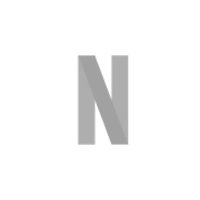Writing a project proposal feels a lot like making cookies. We might all start with the same basic ingredients. But the finished product can vary widely depending on taste preferences, mixing order, baking time, and even the sprinkles you use.
And being in the midst of the pandemic means you’re likely facing the added pressure of a shifting industry that’s impacting the sales process. That’s why it’s so important to get just the right thing cooking and really nail it with every project proposal.
What is a project proposal?
A project proposal—also sometimes called a business or work proposal—is a document that defines the approach needed to execute a solution that meets a given set of project requirements and constraints.
This document might be the first (or only) time a prospective client hears from your team about how you’d approach the project. It’s your chance to show who you are, what you’ve accomplished, and why you’re the best fit for this project. In other words, a work proposal should make you stand out above others!
On a more practical level, a project proposal is also a written commitment of what you plan to execute if you win the contract. Your proposal document must walk the balance of selling yourself while making clear commitments to scope, timeline, and budget.
Sections to include in a proposal template
While each situation might call for something different, investing time upfront to format a proposal template will make it easy for you to create iterations quickly as requests arise.
Here are 7 sections you should consider including in your project proposal template.
1. Executive summary
The executive summary provides a quick overview of the proposal at hand. Be sure to touch on 3 main items in this brief introduction:
- State the problem, showing an understanding of what needs to be solved.
- Touch on your unique ability to solve this problem.
- Thank your prospective client for selecting you to submit a work proposal.
If you’ve drafted a long proposal, consider adding a table of contents right before or after this section.
2. About
Use this space to tell the reader about your company. Share your mission, values, and/or qualifications. Showcase key team members who’ll be working on the project, along with their qualifications.
3. Scope and approach
This section is the heart of any project proposal, as it’s where you lay out the how and why of your plan.
Start by stating your understanding of the client’s needs. This is a great place to highlight specific things you heard from your conversations or learned in your research. For example, show how this approach will address their growing mobile audience or how you’ll bring stakeholder voices into the process.
Next, outline the phases and steps you plan to take to complete your proposed solution. Be sure to explain what each step involves and why it’s part of your approach.
4. Budget
The budget should include costs for all requested items, plus any additional options you recommend. List these out separately so your potential client has clear choices to make.
As you draft your proposal budget, determine whether a fixed number, hourly rate, or cost range is best. Typically, it depends on how much you know about the client and project scope and how comfortable you feel with risk.
You might also want to highlight costs they’ll need to consider that aren’t part of your budget (e.g., hosting, fonts, animation, long-term maintenance).
5. Timeline
Timelines can be tricky because you’re never sure when the project will actually start and what resources you’ll have available.
That’s why I recommend creating a month-by-month timeline that doesn’t put dates to deliverables. This way, the potential client can get a clear sense of how long things take without focusing on real dates that might be obsolete by the time the project really starts.
Of course, many proposals require dates. In that case, why not use a tool to save time? For instance, TeamGantt gives you the ability to make an initial gantt chart, then quickly adjust the timeline for future proposals.
You can even share the project timeline with a client as a view-only link or PDF export.

6. Experience
While I recommend showcasing your credibility throughout the proposal, this section is a great place to include a logo wall, list of clients, and/or case studies.
Take time to build a backlog you can choose from. Then, create a new one with each site project you think is proposal-worthy. Of course, don’t forget to include references with direct contact information.
7. Conclusion
Now it’s time to wrap up your project proposal. Hit the high points with a brief recap of the problem and your solution. And don’t forget to recommend continuing the conversation.
Different types of proposal responses
Even after all your hard work creating the perfect proposal template, you still might find it’s not always the right fit for every response. When that happens, it’s important to recognize why the situation is different and identify how to shift your submission to meet the recipient's needs.
So let’s take a moment to review different types of project proposals you might be asked to prepare.
Request for proposal (RFP) response
An RFP can sometimes be accompanied by a strict, closed process that offers little-to-no interaction with the potential client. You may also be up against a large pool of applicants, with quite lengthy response requirements.
When deciding how to respond to an RFP, consider the following questions:
- What’s the probability you’ll win this project?
- Have you worked with another part of this organization?
- Do you know someone within the organization?
- How many people are going to submit a response?
- Is the prospective client an ideal fit for your team?
- How often do you win RFPs?
Based on your answers, determine how much time and effort you want to put into customizing your template.
Partial project response
Some proposal requests only ask for part of your skills (e.g., discovery and design, but no development). But that doesn’t mean you can’t still sell your entire capabilities. After all, the potential client may change their mind about what they need for this project or a future one.
Any partial project proposal should also touch on how you plan to effectively work with another team to create a smooth transition.
Current client response
We’ve all worked with clients who have stayed with us long enough to ask us to do it all over again. Sometimes they require you to go through a formal selection process. But many times, the process becomes as informal as a handshake.
Even if your client doesn’t require a proposal, formalize the process by giving them, at minimum, your template response. It’s important for each side to have a conversation about what’s needed this time around and create a written recommendation for the scope, budget, and timeline.
“Tell me about yourself” response
Before a formal proposal request arrives, you may be asked to tell the potential client a little bit about yourself. While a quick email response can work, consider going bigger since this is a perfect opportunity to sell yourself.
Take your core project proposal and break it down into a 1-2 page document, sharing key items like your values, core focus areas, people you work with, and visual samples of your work. Ideally, you’ll follow up with a full project proposal soon after, so don’t give away all the good stuff or create a shorter duplicate.
5 key ingredients for good proposal writing
An RFP might dictate what sections go into your proposal. But the visuals, content, and presentation make all the difference when it comes to whether or not your work proposal is actually effective.
These simple guidelines can help you sharpen your proposal writing skills.
1. Understand your recipient
It’s critical to understand who will be reviewing the business proposal on the client’s team, as well as the industry they work within.
Set up meetings and do market research to get to know what challenges they face, how they’re positioned against their competitors, and where they could see growth with this project. A small amount of research will go a long way in showing you understand the client and their needs.
2. Recommend the right solution
A request for proposal often dictates what the solution should be. Once you dig in further and learn more about the client’s needs, you may find they need a different solution.
Never shy away from sharing the right solution and approach—even if the budget and timeline run up against it. Potential clients often guess at their needs. As experts, we should share our recommendations vs. selling the solution short.
If you do veer away from what the client asked originally, make sure to acknowledge that request while recommending the different solution. That way they know you heard them.
3. Put your best foot forward
Everything you place in front of potential clients will help form their opinion about your work. Take time upfront to create a work proposal template that’s heavily branded with first-class writing. The proposal should feel unique to you and meet the quality of the work your entire team does.
4. Don’t underestimate the value of credibility
Outside validation of your work is important and should never be underestimated. Think carefully about which clients you plan to showcase for each business proposal and what message that conveys to your prospect.
Is it a client similar to them? Is it a north star for them? Is it technically complicated or visually stunning? Try to choose case studies that tell a full story of your capabilities.
Also, don’t hesitate to infuse the validation throughout the proposal. Any good product website shows you social proof early and often.

5. Showcase your team
People like to know who they’ll be working with—the humans behind the screen. Find clever ways to incorporate visuals of your team and highlight their skills throughout the project proposal.
Free template for planning and tracking project proposals
Sending the right document is just as important as making sure it’s done on time. I’ve spent too many nights and last-minute trips to the post office over my 20+ years to know that having a clear process—and tool to track it—is essential for avoiding panic at the eleventh hour, not to mention angry staff members.
Outline your workflow from the first contact to the deal completion (ideally with a win!). When critical steps are mapped out in a plan, it’s easy to see where things are falling behind and what needs to happen to hit key proposal deadlines on time.
Using a collaborative project management tool like TeamGantt can help you get all your team members on the same page around tasks and deadlines. We’ve created a free project proposal process template for you in TeamGantt so you can jump right in!
Here are a few simple ways you can use this template to plan and manage your RFP response process.
Easily schedule proposal tasks and deadlines in Gantt view
Scheduling important proposal tasks and due dates is as easy as dragging and dropping tasks—or entire task groups—into their new rightful place. Click and drag the edges of each taskbar to set a new task duration.

Monitor and manage multiple RFP schedules in Calendar view
Toggle to Calendar view to see your RFP response schedule laid out as a monthly calendar. This is a great way to see how all your project proposal tasks and deadlines stack up over time.

Collaborate on tasks and share important proposal documents
Chat with your team directly from a task’s Comments section, or upload the latest draft of your project proposal to get input from your team.

Ready to get started?
With TeamGantt, you can create an interactive project plan without the tedium. You’ll have all the features you need to ensure projects finish on time and budget. And it all comes with a simple and intuitive interface that’s easy for anyone to use.
Try TeamGantt for free today, and save time with this easy template!







